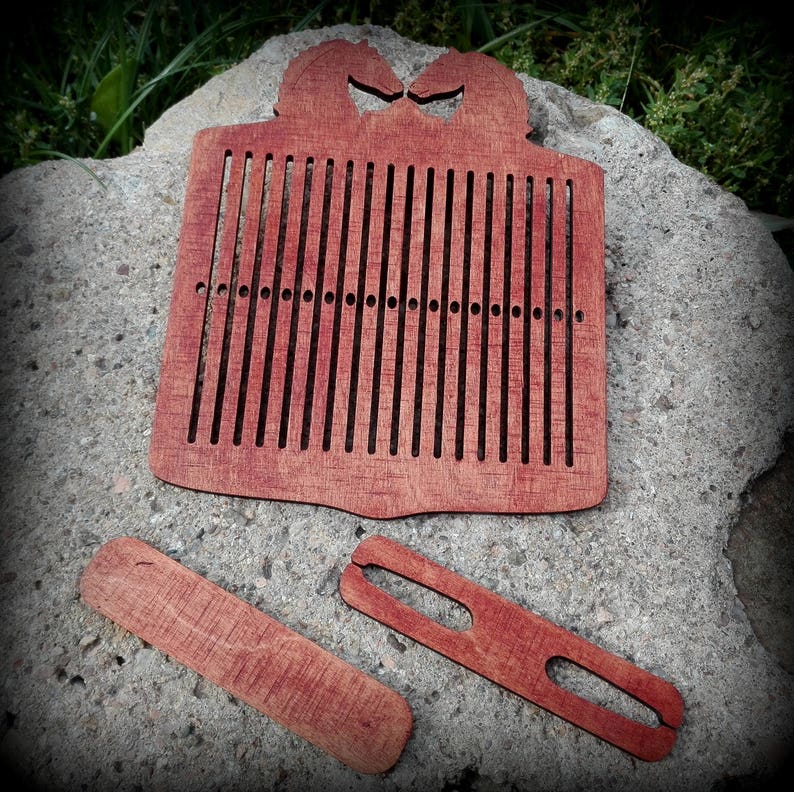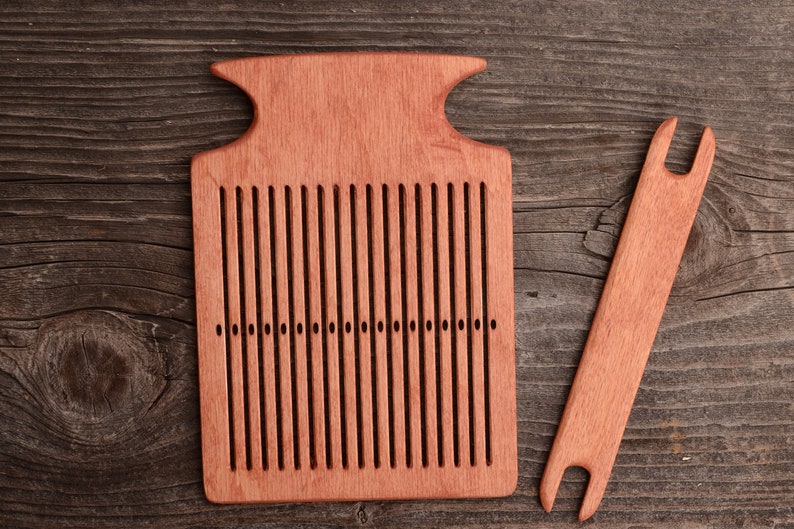First attempts at weaving on the little upcycled box loom.
It's working!
All warped up and ready to go!
If you missed the post about building this handy little up-cycled box loom, go there now ... ;-)
If you missed the post about building this handy little up-cycled box loom, go there now ... ;-)
For this first shot at weaving on the new converted box loom, I choose some embroidery floss and black crochet cotton. It's a 7-pattern thread continuous knot from Susan J. Foulkes' book, Weaving Patterned Bands on p.119. More of a double helix, than a knot, though.
For the colors, I am using black crochet cotton for the background, and green #3 Pearl Cotton for the pattern threads, with a blue accent along the borders. The background threads should be thinner threads, while the pattern threads should be twice as thick to help them pop out more. Since it's only a 2-yard warp, it used up 1 embroidery floss-sized skein of blue (8 yards) and green (16 yards). [I wish I'd taken a photo of that before I started ... The floss was a gift when a friend cleared out her mother-in-law's house. She sent me her stash of embroidery floss.] I only had 1 skein of that lovely green.
I ran a 2-yard warp on the inkle loom. I didn't worry about a cross or keeping the colors in order. This is short enough, I knew it wouldn't get tangled. So I ran the colors in color blocks (as opposed to the exact order they'd be in the threaded warp), and pulled out the needed threads when I threaded the heddle -- with my brand new green glass bead heddle threader. ;-)
I had planned on setting up a starter run, and practicing several of the 5-7-9 patterns out of the Foulkes book, but I also really wanted to get started on the Celtic knots, so I'll save the sampler for later.
Sami Sword Shuttles from HandyWoman on Etsy
Another realization: Equipment makes a huge difference. When you have the right tools for a job, it makes all the difference. I am realizing that the sword-style Sami shuttle would probably make this work go a lot easier. It is designed to pick up those pattern threads. The ones I have now are blunt and short, and don't make it easy to get between. So I put in an order with HandyWoman in Texas. They only took 2 days to get here!
Abbacus-Style Pattern Keeper
I set up a little swiping bead system made with a thrift store picture frame to help me keep track of where I am in the pattern as far as what line/pick and what pattern threads to pull up or push down. The beads mimic the paper pattern above. This simple little system works better for me than trying to do it on paper where I am perpetually losing my place. I'll do a separate post on this handy little invention of mine. ;-)Here's the set-up for my workstation on the dining room table. Actually it works better to have it sitting on a chair so it's a little lower. I am still using a different style of shuttle -- another one from HandyWoman on Etsy. This one is a slender boat shuttle designed for inkle weaving with a glass bobbin (Oooh!) As mentioned above, it's not quite the right tool for the job, so I'll be happy to switch to the Sami sword-style shuttles above. I just want to finish out the cotton on the bobbin ...
Here you can also see the brilliant little book light / task light my husband contributed to the cause. The dark colors are hard to see in the evenings after I get home from work and the lighting in our house is not great. So the task light is just the thing! It makes a huge difference!























































